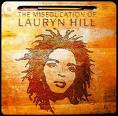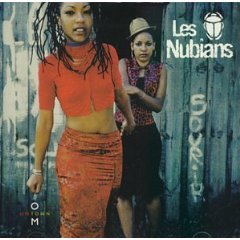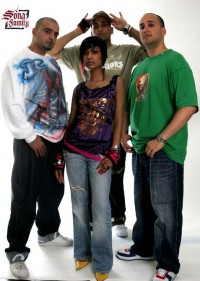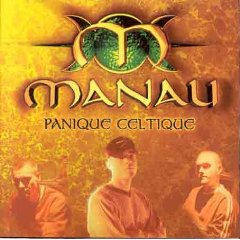From the U.S. to Senegal, Italy to Japan, Cuba to Australia and all of the various locales in between, hip hop has become a worldwide phenomenon. American hip hop originated in New York’s Bronx borough in the 1970s.
These original manifestations of hip hop music were largely influenced by West African music and storytelling. Early hip hop artists were particularly fascinated by the character of the griot in West African culture. Before the written word became a prevalent form of self-expression in West Africa, the griot served as the oral historian,  musician, and teacher of the community. Today, we see proof of the didactic nature of hip hop in album titles such as the “Miseducation of Lauryn Hill,” etc. and “academic” titles, such as Dr. Dre. For hip hop artists and listeners across the globe, this music serves as a way for them to re-contextualize and understand their cultures (and sounds) in new and interconnected ways, based on experiences of migration, exile, and diaspora.
musician, and teacher of the community. Today, we see proof of the didactic nature of hip hop in album titles such as the “Miseducation of Lauryn Hill,” etc. and “academic” titles, such as Dr. Dre. For hip hop artists and listeners across the globe, this music serves as a way for them to re-contextualize and understand their cultures (and sounds) in new and interconnected ways, based on experiences of migration, exile, and diaspora.
 Unarguably, Africa is home to the largest Hip Hop community outside the US. Well-known hip hop voices from across the continent include Positive Black Soul (Senegal) and Daara J (Senegal), X Plastaz (Tanzania) Zombo (South Africa), Army Squad (South Africa), and Yéli Fuzzo (Mali). Diasporic artists include MC Solaar (originally from Senegal, now living in France) and Les Nubians (Cameroonian sisters now living in France), and JCC, also known as Abdul Bello (born in Nigeria, now living in the UK).
Unarguably, Africa is home to the largest Hip Hop community outside the US. Well-known hip hop voices from across the continent include Positive Black Soul (Senegal) and Daara J (Senegal), X Plastaz (Tanzania) Zombo (South Africa), Army Squad (South Africa), and Yéli Fuzzo (Mali). Diasporic artists include MC Solaar (originally from Senegal, now living in France) and Les Nubians (Cameroonian sisters now living in France), and JCC, also known as Abdul Bello (born in Nigeria, now living in the UK).
 However, Europe also boasts a variety of hip hop cultures, mostly coming out of urban centers such as Paris, Marseilles, London, Hamburg, Berlin, Stuttgart, Milan, Turin, Bologna, Rome, Madrid, Barcelona, Istanbul and Athens. Due to the range of sociological and ethnological factors in each of these cities, the themes in European hip hop are quite diverse, including immigration, cultural blending, politics, sexuality, gender, arranged marriages, money, nationalism, racism, belonging, and religion. Similar to the U.S. hip hop movement, European hip hop has seen two waves of “new school” and “old school” artists. Famous hip hop artists from across Europe include Zondani Nekri and Sadahzinia (Greece), Articolo 31 (Italy), Sultan Tunc (Turkey), Sona Family (United Kingdom), and B-Tight (Germany).
However, Europe also boasts a variety of hip hop cultures, mostly coming out of urban centers such as Paris, Marseilles, London, Hamburg, Berlin, Stuttgart, Milan, Turin, Bologna, Rome, Madrid, Barcelona, Istanbul and Athens. Due to the range of sociological and ethnological factors in each of these cities, the themes in European hip hop are quite diverse, including immigration, cultural blending, politics, sexuality, gender, arranged marriages, money, nationalism, racism, belonging, and religion. Similar to the U.S. hip hop movement, European hip hop has seen two waves of “new school” and “old school” artists. Famous hip hop artists from across Europe include Zondani Nekri and Sadahzinia (Greece), Articolo 31 (Italy), Sultan Tunc (Turkey), Sona Family (United Kingdom), and B-Tight (Germany).
 The majority of French hip hop artists come from urban milieus on the outskirts of major French cities such as Paris, Marseilles, Toulouse and Nice. These areas, referred to in France as banlieues, are comprised of a series of cités, which are essentially clusters of low-income high rises called HLMS (habitation à loyer modéré). HLMs are home primarily to immigrants hailing from France’s former African colonies. Therefore, many of these immigrant rappers craft lyrics about their experiences growing up in this environment. References to Africa and globalization abound in their work, as do explicit descriptions of the quotidian realities of immigrants in France. Major themes include poverty, racism, gender
The majority of French hip hop artists come from urban milieus on the outskirts of major French cities such as Paris, Marseilles, Toulouse and Nice. These areas, referred to in France as banlieues, are comprised of a series of cités, which are essentially clusters of low-income high rises called HLMS (habitation à loyer modéré). HLMs are home primarily to immigrants hailing from France’s former African colonies. Therefore, many of these immigrant rappers craft lyrics about their experiences growing up in this environment. References to Africa and globalization abound in their work, as do explicit descriptions of the quotidian realities of immigrants in France. Major themes include poverty, racism, gender  inequalities, unemployment, Islam, French bureaucracy, and citizenship. Famous French hip hop artists include: IAM, Manau, Supreme NTM, La Cliqua, MC Solaar, and Saïan Supa Crew. For more information on French hip hop, check out the documentary, “Democracy in Paris,”. I had the opportunity to work as a translator on this project and learned a great deal about Parisian hip hop culture.
inequalities, unemployment, Islam, French bureaucracy, and citizenship. Famous French hip hop artists include: IAM, Manau, Supreme NTM, La Cliqua, MC Solaar, and Saïan Supa Crew. For more information on French hip hop, check out the documentary, “Democracy in Paris,”. I had the opportunity to work as a translator on this project and learned a great deal about Parisian hip hop culture.
Common to the global hip hop movement is the practice of sampling excerpts of different musical genres of one’s country of origin, while simultaneously taking thematic or stylistic cues from other international hip hop artists. Though hip hop styles and themes vary based on the culture of the performer, global hip hop artists share a desire to overcome injustice and educate an international audience about cultural and social realities faced by individuals around the world.


Comments